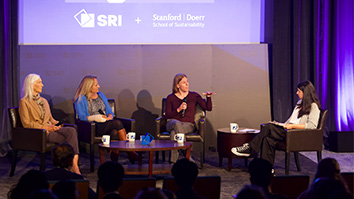Citation
Bui, H. H., Phung, D. Q., Venkatesh, S., & Phan, H. (2008, July). The Hidden Permutation Model and Location-Based Activity Recognition. In AAAI (Vol. 8, pp. 1345-1350).
Abstract
Permutation modeling is challenging because of the combinatorial nature of the problem. However, such modeling is
often required in many real-world applications, including activity recognition where subactivities are often permuted and
partially ordered. This paper introduces a novel Hidden Permutation Model (HPM) that can learn the partial ordering
constraints in permuted state sequences. The HPM is parameterized as an exponential family distribution and is flexible so
that it can encode constraints via different feature functions.
A chain-flipping Metropolis-Hastings Markov chain Monte
Carlo (MCMC) is employed for inference to overcome the
O(n!) complexity. Gradient-based maximum likelihood parameter learning is presented for two cases when the permutation is known and when it is hidden. The HPM is evaluated
using both simulated and real data from a location-based activity recognition domain.[…]


